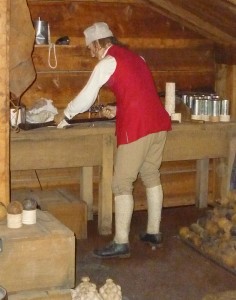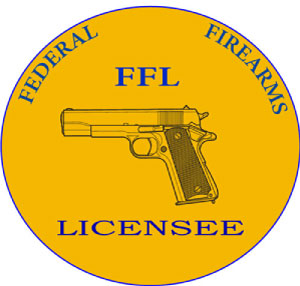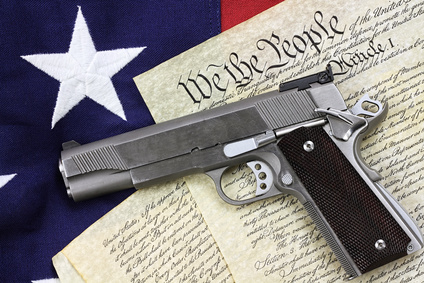Can American Firearms Regulation Be Traced To British History?
English common law is without question the foundation on which American jurisprudence is set. The United States has historically based it’s own set of laws and regulatory policies on what was handed down through English kings and the actions of parliament. This principle can be traced through colonial North America and the pre-constitutional period after 1776 as well. These traditions, well established and practiced in colonial legislatures and in the period prior to the ratification of the U.S. Constitution, are at the core of modern American jurisprudence. The evidence indicates that with respect to the regulation, manufacturing, importation, use and possession of firearms, this rule applies as well.
[magicactionbox id=2965]
Several books and articles have addressed elements of this subject. The most relevant sources consistently reveal English kings and ruling legislatures on numerous occasions passed decrees, or other mandates compelling the restriction or otherwise regulating the manufacture, proliferation, importation, possession or use of weapons, including common firearms used for hunting or sport (1). In general, the regulations imposed appear to have been officially implemented as a result of a perceived threat to the government, or those in power; and usually aimed at common people who had little or no economic or political power with which to oppose the regulation. An early example of this type of restriction on firearms in England includes “Game Laws”. The Game Act of 1671 for example limited firearms ownership to persons who met certain wealth or property thresholds, or were of the correct elite pedigree. Another example is the 1548 law of Edward VI that required those who “shoot guns” to register with a government official (2).
Another later example is the case of Charles II and his fear of armed “treasonous” citizens after his restoration. Because of the political instability during his reign, Charles II issued among other similar mandates, orders that required all gunsmiths to report to the “Ordnance Office” with a list of all weapons manufactured, and to whom the weapons were sold for the 6 months preceding December 1660. Gunsmiths were further ordered to report the production and transfer of weapons, and to whom they were transferred weekly on Saturdays(3).
The English crown evidently used it’s power to not only regulate the private possession of weapons, but also the manufacturing and distribution of firearms. It also appears the English government was concerned with who was potentially in possession of any firearms that were manufactured. In either case, it’s evident the ruling government used its power to compel their “subjects” to cede their autonomy with respect to the manufacturing, possession or use of firearms.

Regulation and control of weapons didn’t always involve restrictive measures on the making or use of weapons. Some laws actually required that certain persons keep and maintain firearms, but political “instability” in the 17th century for example, prompted the Stuart kings to pass legislation disarming certain elements of the population if it was feared they could be a detriment to the “peace of the kingdom”(4). The crown also prohibited the “importation of weapons or parts of weapons” as a measure against what was thought to be large quantities of “Gunnes” coming into London(5).
These are just a few examples of historical regulation of all types of weapons, including of course, firearms. The progenitor of the historic and current body of laws applicable in the United States exercised it’s power in limiting the importation, manufacture, distribution and possession of weapons, especially in times of crisis.
This article does not argue the points of propriety, moral, lawful or otherwise regarding historical regulation of firearms by the English. The purpose of the article is to expose the reader to the fact that English monarchs and legislatures instituted laws governing weapons, including firearms; and that subsequently, laws, codes and mandates implemented in colonial North America mirrored these actions.
In England, the fear of firearms proliferation pertained to assumptions that elements of the population possessing arms would turn those arms on the ruling monarch. It should be noted that in the laws and ordinances of British North America, these types of restrictions on the use and possession of firearms and other weapons appear to have been related to the ruling government’s fear that certain ethnic, racial and religious groups might use those weapons against the (English) people, or the government.
Sources:
(1) Lois G. Schwoerer, To Hold and Bear Arms: The English Perspective, 76 Chi.-Kent. L. Rev. 27 (2000)., pp. 34 – 35. Available at: http://scholarship.kentlaw.iit.edu/cklawreview/vol76/iss1/3
(2) Professor Schwoerer cites the original source as: An Acte Concerninge Crosbowes and Handguns, reprinted in 4 THE STATUTES OF THE REALM, supra note 41, at 832-33. This author has not examined the original source.
(3) Joyce Lee Malcolm, “Charles II and the Reconstruction of Royal Power,” The Historical Journal Vol. 35, No. 2 (Jun., 1992), p. 319
(4) Ibid p. 327
(5) Ibid p. 325. The original “Gunnes” is cited by Malcom as: “P.R.O,. PC 2/55/367, 187. The order was dated 4 Sept 1661”. The original source has not been examined by this author.



